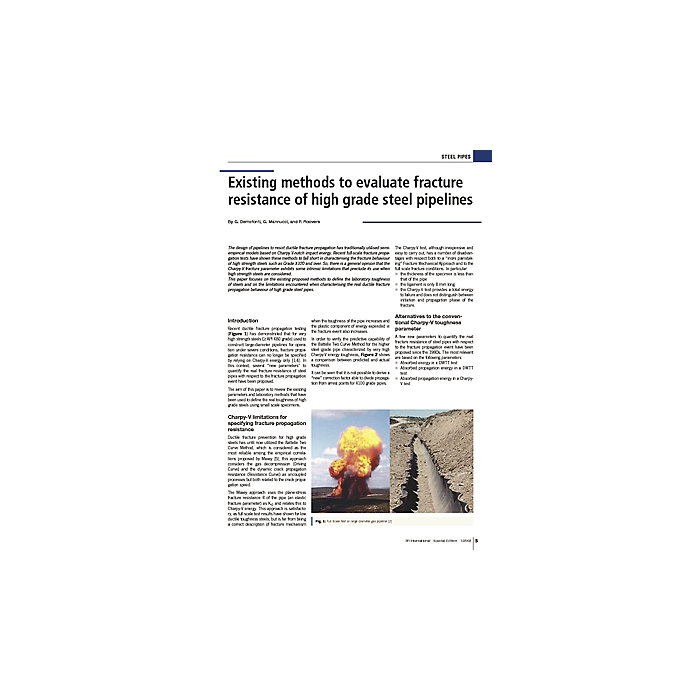Existing methods to evaluate fracture resistance of high grade steel pipelines
4,90 €
Auf Lager
Artikelnummer
01252_2008_SP1_01
The design of pipelines to resist ductile fracture propagation has traditionally utilised semi-empirical models based on Charpy V-notch impact energy. Recent full-scale fracture propagation tests have shown these methods to fall short in characterising the fracture behaviour of high strength steels such as Grade X100 and over. So, there is a general opinion that the Charpy-V fracture parameter exhibits some intrinsic limitations that preclude its use when high strength steels are considered. This paper focuses on the existing proposed methods to define the laboratory toughness of steels and on the limitations encountered when characterising the real ductile fracture propagation behaviour of high grade steel pipes.
| Autoren | G. Demofonti/G. Mannucci, P. Roovers |
|---|---|
| Erscheinungsdatum | 30.04.2008 |
| Format | |
| Zeitschrift | 3R - Special 1 2008 |
| Verlag | Vulkan-Verlag GmbH |
| Sprache | English |
| Seitenzahl | 4 |
| Titel | Existing methods to evaluate fracture resistance of high grade steel pipelines |
| Beschreibung | The design of pipelines to resist ductile fracture propagation has traditionally utilised semi-empirical models based on Charpy V-notch impact energy. Recent full-scale fracture propagation tests have shown these methods to fall short in characterising the fracture behaviour of high strength steels such as Grade X100 and over. So, there is a general opinion that the Charpy-V fracture parameter exhibits some intrinsic limitations that preclude its use when high strength steels are considered. This paper focuses on the existing proposed methods to define the laboratory toughness of steels and on the limitations encountered when characterising the real ductile fracture propagation behaviour of high grade steel pipes. |
Eigene Bewertung schreiben


